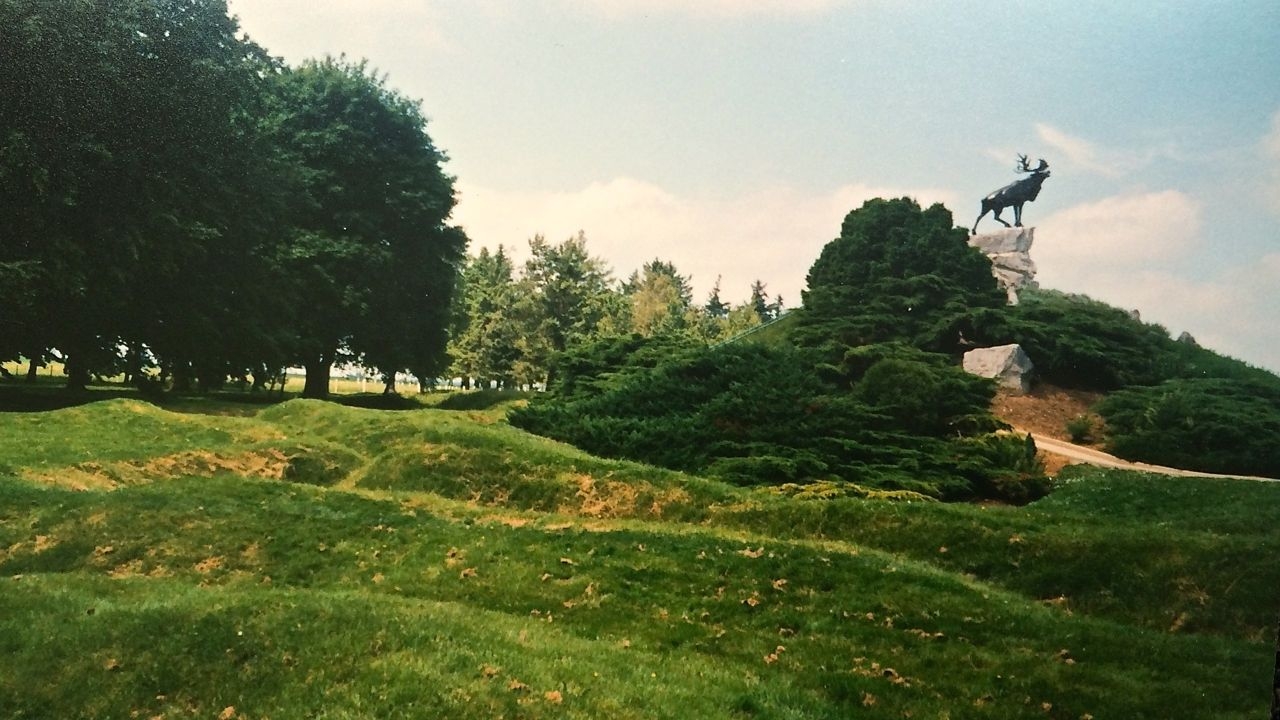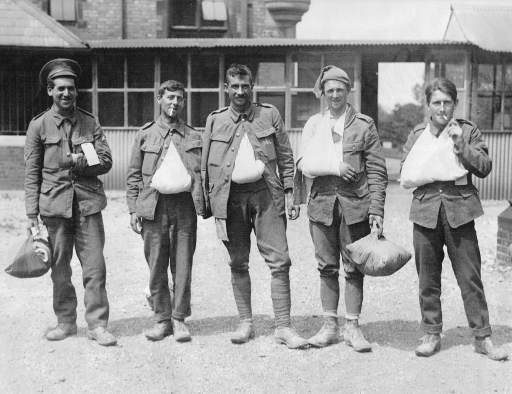New photographic exhibitions at the Canadian War Museum in Ottawa highlight the impact of the First World War on Newfoundland and Labrador.
The displays, launched in the run-up to the Battle of the Somme Centenary commemorations, are a timely reminder of a particularly grievous episode for the peoples of what is now Canada’s easternmost province.
Troops of the Newfoundland Regiment were almost wiped out on July 1st 1916, the opening day of the Allied offensive on the Somme.
Of the 801 men sent into action against heavily fortified German positions at Beaumont-Hamel, 233 were killed, 386 were wounded and 91 were reported missing. The attack was over in less than an hour.
All of the photos specially displayed for July 1,1916 – The Somme and Beaumont-Hamel reflect the disastrous events of that day.
 The Caribou Memorial to the Royal Newfoundland Regiment at Beaumont-Hamel, with trenches in the foreground (Photo: Centenary News)
The Caribou Memorial to the Royal Newfoundland Regiment at Beaumont-Hamel, with trenches in the foreground (Photo: Centenary News)
The wider legacy of the Great War for Newfoundland, a self-governing dominion until it became a Canadian province in 1949, is captured in a separate exhibition alongside.
“This exhibition illustrates how profoundly the First World War, and especially the tragedy of war, affected people, communities, politics and culture in the province of Newfoundland and Labrador,” explains Stephen Quick, Director General of the Canadian War Museum.
Personalities
The focus is on a dozen Newfoundland stories, featuring personalities of the time. They include:
*Leonard Stick, the first man to join the newly-formed Newfoundland Regiment of volunteers in 1914
*John Shiwak, an Inuk trapper and hunter from Labrador who became the Regiment’s top marksman
*Armine Nutting Gosling, a Quebec-born teacher who helped to establish the basis for post-war women’s rights, and improved public health and child welfare in Newfoundland and Labrador.
Director-General Stephen Quick says: “Traces of the First World War – Newfoundland and Labrador reveals how pride, trauma and grief affected people at home and overseas, and how the war still influences ideas, opinions and reflections in so many ways, from literature and the arts to war memorials and family histories.”
‘Traces of the First World War – Newfoundland and Labrador’ runs at the Canadian War Museum, Ottawa, until January 1st 2017. The exhibition has been developed in partnership with The Rooms (Achives, Art Gallery & Museum) in St John’s Newfoundland.
‘July 1, 1916 – The Somme and Beaumont-Hamel’ is displayed until July 20th 2016.
Source: The Canadian War Museum, Ottawa
Images courtesy of The Royal Newfoundland Regiment Historical Collection, 2007-59 (Beaumont-Hamel survivors); Centenary News (Caribou Memorial)
Posted by CN Editorial Team
